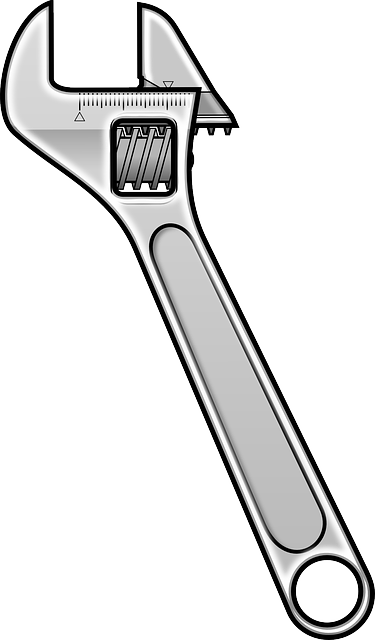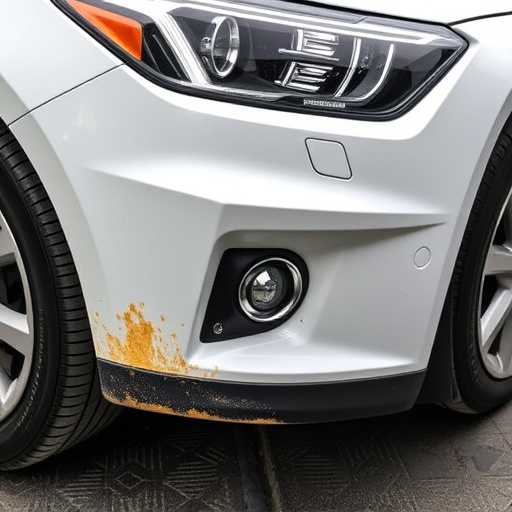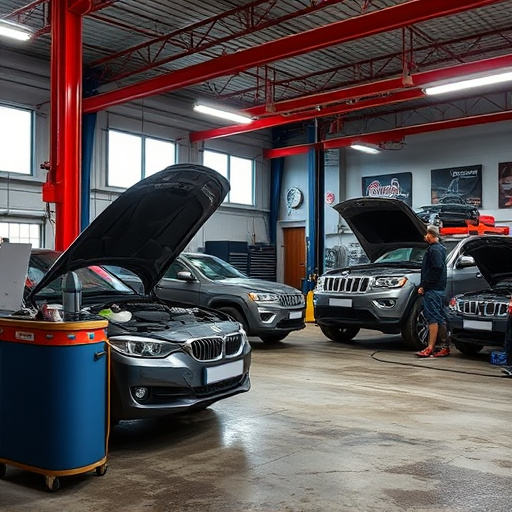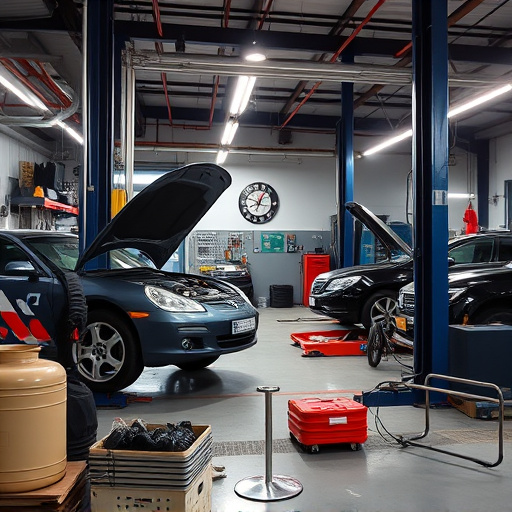The brake system collision check technology is a game-changer in auto body repairs, utilizing sensors and algorithms to accurately assess braking component damage post-collision. This data-driven approach enhances repair precision by identifying and replacing only necessary parts, reducing costs and turnaround times for customers. It serves as a critical quality control measure, ensuring optimal braking system function after an accident. While implementation requires additional time and training, its benefits include improved vehicle safety, enhanced repair accuracy, and proactive maintenance through regular collision checks.
The brake system, a critical component in vehicle safety, demands meticulous maintenance. This is where the brake system collision check technology steps in as a game-changer. This innovative tool offers enhanced repair accuracy by meticulously evaluating brake performance during collisions. By understanding this technology and its implications, mechanics can navigate the benefits and challenges it presents for routine checks. From precision adjustments to identifying subtle issues, collision checks revolutionize brake repairs, ultimately ensuring safer driving experiences.
- Understanding Brake System Collision Check Technology
- How Collision Checks Enhance Repair Precision
- Benefits and Challenges of Implementing Routine Checks
Understanding Brake System Collision Check Technology

The brake system collision check technology is a revolutionary tool that has transformed the way auto body shops and their technicians approach brake repairs. This advanced system utilizes sophisticated sensors and algorithms to accurately determine the extent of damage to a vehicle’s braking components following a collision. By mimicking the conditions of a crash, the check provides detailed insights into the performance and integrity of each brake part, from calipers and rotors to pads and fluid.
This data-driven approach significantly enhances the accuracy of auto body repairs. Technicians can now pinpoint exact issues, ensuring that only damaged parts are replaced, reducing unnecessary auto body repairs. Moreover, the brake system collision check technology enables faster turnaround times in auto body shops by streamlining the diagnostic process, leading to more efficient and cost-effective auto body repairs for customers.
How Collision Checks Enhance Repair Precision

The implementation of brake system collision checks plays a pivotal role in enhancing the precision and safety of vehicle repair services. These checks serve as a crucial quality control measure, ensuring that every component within the intricate network of a car’s braking system functions optimally after an accident. By meticulously evaluating the condition of brakes, sensors, and associated parts, auto repair shops can identify even subtle anomalies that might have gone unnoticed during visual inspections alone. This proactive approach not only safeguards drivers but also prevents potential failures down the line, thereby fostering confidence in vehicle safety.
Moreover, collision checks facilitate a more accurate diagnosis of damage, which is paramount for effective dent repair. In a scenario where a vehicle’s structure has been distorted due to impact, precise measurements and analyses enable technicians to realign panels, straighten frames, and restore the vehicle to its pre-accident condition with greater precision. This meticulous attention to detail ensures that not only are external dents removed, but also that internal components, especially those related to safety systems like brakes, are thoroughly inspected and corrected, ultimately enhancing overall auto repair services quality.
Benefits and Challenges of Implementing Routine Checks

The routine implementation of brake system collision checks offers a multitude of benefits for both vehicle owners and automotive service providers. By regularly inspecting brakes post-collision, repair shops can identify subtle damages that might go unnoticed during initial assessments. This proactive approach ensures that every component—from calipers to pads and rotors—is in optimal condition, enhancing overall safety. Moreover, these checks facilitate early detection of potential failures, allowing for timely repairs that prevent more serious accidents down the line.
Despite its advantages, introducing brake system collision checks is not without challenges. Integrating this process into existing repair workflows demands additional time and specialized knowledge. Auto body repair shops need to invest in training their staff and acquiring necessary tools to conduct these checks effectively. Furthermore, ensuring customer acceptance and understanding of the importance of such routine maintenance can be an obstacle, especially among those unfamiliar with modern vehicle technologies. However, addressing these challenges through comprehensive training programs and effective communication strategies can maximize the benefits of brake system collision checks in the long run, contributing significantly to the accuracy and reliability of automotive collision repair and related tire services and autobody repairs.
The implementation of brake system collision check technology is a game-changer in automotive repair, ensuring precision and safety. By providing detailed insights into vehicle dynamics during collisions, these checks enable mechanics to make more accurate repairs, enhancing overall vehicle performance and passenger safety. While initial costs and training challenges exist, the benefits far outweigh the difficulties, making routine collision checks an essential practice for modern garages. Embracing this technology is crucial for maintaining high repair standards and fostering trust among customers.














